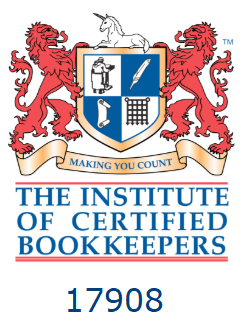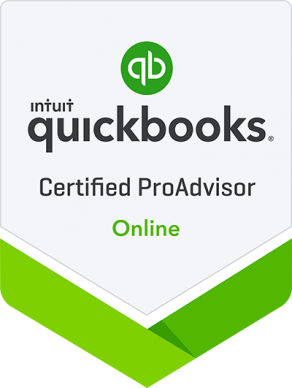Practical guide: off-payroll working from 6 April 2021
The long-delayed extension to the off-payroll working rules finally took effect from 6 April 2021. What are the crucial things that businesses who provide services through an intermediary, or engage workers that provide services in this way, need to know?

Off payroll v IR35
There are two sets of anti-avoidance rules to tackle the situation where a worker provides their services to an end user through an intermediary, usually a personal service company (PSC). These apply if the nature of the engagement is such that, if the worker provided their services direct to the end user, the worker would be an employee of theirs. The rules deal with the perceived avoidance of employment taxes and NI.
The original anti-avoidance rules, the IR35 regime, require the worker’s PSC to assess whether the worker would be an employee but for the existence of the intermediary.
Where this is the case, the PSC must calculate a deemed employment payment on which tax and NI is payable.
The off-payroll working rules have only been in force since April 2017 and until recently were only applicable where the end user was a public sector body. The rules are similar to IR35 but shift the responsibility for making the assessment of the contractual relationship to the end user, not the PSC. Where the assessment finds that the worker would be an employee in the absence of the PSC, the engager or fee payer (if different) must deduct tax and NI from payments made to the PSC and account for employers’ NI too.
The off-payroll working rules are extended from 6 April 2021 to apply where the end user is a medium or large private sector organisation. Where the engagement falls within the scope of the off-payroll working rules, the PSC does not need to consider the IR35 rules.
Medium or large?
Where a business is an end user, i.e. they are engaging the services of a worker via a PSC (or other intermediary), the first thing they will need to determine is whether they are classed as “medium or large”. If they aren’t, they won’t need to worry about the off-payroll working rules, and their contractor’s PSC will need to consider IR35 instead.
This is advantageous for the business, as the risk of being penalised for non-compliance lies with the PSC.
In basic terms, a business will be “medium or large” if any two of the following are true:
- The annual turnover is more than £10.2 million.
- The balance sheet total is more than £5.1 million.
- The organisation has more than 50 employees.
A simplified turnover test applies to organisations that are not companies, such as limited liability partnerships, who fall within the rules if their turnover is more than £10.2 million.
Businesses that are currently “small” should keep an ongoing review of this, especially if they are close to any of the thresholds. They should keep a record of this in case they are asked to confirm how they have arrived at the conclusion the extended rules are not applicable to them.
Impact on engagers
If the business are classed as medium or large by applying these tests, they will need to consider the nature of all engagements in existence on or after 6 April 2021.
Where an engagement spans this date, the rules apply from 6 April 2021, so previous payments are unaffected.
Businesses will need to undertake a status determination for each engagement where the services are provided via an intermediary such as a PSC. This is to determine whether a direct engagement with the worker would make them an employee.
Businesses should use HMRC’s Check Employment Status for Tax (CEST) tool, available on GOV.UK, in the first instance.
The tool has been criticised for not dealing with every situation accurately but should still be the starting point.
As long as the business provides accurate information, and that information reflects the reality of the engagement, HMRC will abide by the result.
The business must give a copy of the determination and the reasons for reaching it to the worker, and to all other parties in the chain. If the worker disagrees with the determination and challenges it, within 45 days the business must either provide a revised determination or confirm that the original determination stands.
It is important that engagers do carry out the status determination as a failure to do so may render them liable for the worker’s tax and NI.
If the rules apply
If the businesst carries out a determination and the result is that a worker would be an employee of the end client if they provided their services directly, the client (or fee payer if different) must:
- calculate the deemed direct payment (which is the amount billed by the PSC as adjusted to take account of any VAT, recharged materials and expenses)
- deduct tax and employees’ NI from the deemed direct payment before paying the worker’s intermediary
- report the payment and associated deductions to HMRC under RTI, indicating that the worker is an off-payroll worker
- calculate employers’ NI on the deemed direct payment and pay this over to HMRC with the tax and employees’ NI deducted from the payment; and
- calculate and pay the apprenticeship levy, where applicable.
While sanctions can be levied for non-compliance, HMRC has indicated that it will apply a soft touch approach initially and that inaccuracy penalties will not be levied until April 2022.
Advising off-payroll workers
If workers are providing services through a PSC, rather than engagers, they should check whether the end user is a medium or large organisation at the outset.
It is possible that some small organisations will apply the rules where they do not need to. The worker should advise them that they can continued to be paid gross in these circumstances. However, they will still need to consider the IR35 rules.
If the worker receives a determination saying that the off-payroll working rules do apply, they have 45 days to challenge it. If they do not, or do but receive confirmation of the original decision, they no longer need to consider the IR35 rules.
However, instead of being paid gross, tax and NI will be deducted from the payment made to their PSC. They will receive credit for this against the tax and NI that is payable on payments made by the PSC to them personally, e.g. where they later take a salary from it.
This will obviously affect cash flow, especially where there is a profit extraction strategy in place. Some budgeting should be undertaken when deciding whether to accept a particular engagement.
Unfortunately for these businesses, the off-payroll worker status does not confer any entitlement to other aspects of employment, such as statutory sick pay, paid leave or pension auto-enrolment.
Related Topics
-
Government rushes through NI cap on pension salary sacrifice
The government has already drafted legislation to impose a £2,000 limit on NI exempt pension contributions under salary sacrifice arrangements. What else do we know?
-
Sneaky change is a blow for side hustles
With most of the media focused on the headline-grabbing announcements from the Budget, a read of the published small print reveals another change coming in 2029. It’s bad news if you are an employee with a side hustle, but what’s going on?
-
Dodging the 2027 IHT and pension changes
In a little over a year the inheritance tax (IHT) exemption for unused pension savings comes to an end. If you’re married or in a civil partnership, one simple step might save your estate thousands in IHT. What is it?





 This website uses both its own and third-party cookies to analyze our services and navigation on our website in order to improve its contents (analytical purposes: measure visits and sources of web traffic). The legal basis is the consent of the user, except in the case of basic cookies, which are essential to navigate this website.
This website uses both its own and third-party cookies to analyze our services and navigation on our website in order to improve its contents (analytical purposes: measure visits and sources of web traffic). The legal basis is the consent of the user, except in the case of basic cookies, which are essential to navigate this website.